15 Ducks with Orange Feet
Ducks with bright orange feet are hard to miss. While most people look at a duck’s feathers to tell what species or breed it is, the color of a duck’s feet can also be a helpful clue. Orange feet are common in many domestic ducks and some wild ones too. In some species, the feet become brighter during mating season to attract a partner.
Foot color may seem like a small detail, but it can help you quickly narrow down what type of duck you’re looking at. Researchers also use leg color to tell ducks apart and track their movements.
If you’ve spotted a duck with orange feet and wondering what breed or species it might, this guide will help you get started.
1. American Black Duck
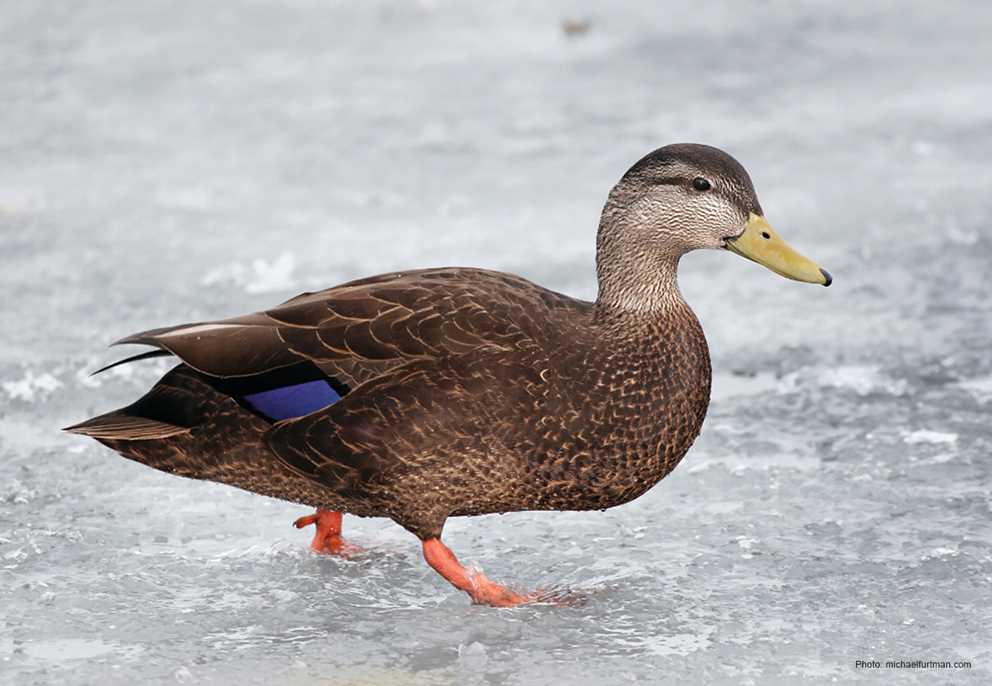
The American Black Duck is a large dabbling duck found mainly in eastern North America. It has dark brown plumage with lighter edges and a purplish-blue wing patch. Although it often has dull orange feet, during the breeding season the feet can appear reddish-orange. This duck prefers quiet freshwater areas like marshes, ponds, and coastal bays. It is shy and often seen mixing with Mallards. Sadly, its numbers have dropped in some places due to habitat loss and hybridization with Mallards.
2. Plumed Whistling Duck
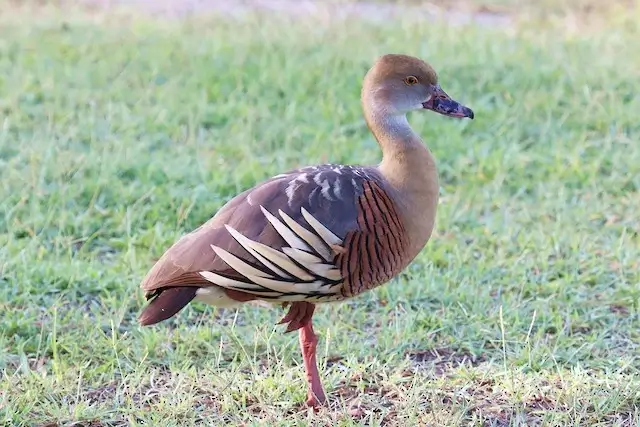
The Plumed Whistling Duck is a tall, slim duck from Australia, known for its long neck, upright posture, and soft pink to reddish feet. It has beautiful cream-colored plumes on its sides, which give it its name. This duck lives in grasslands and wetlands and feeds mostly on seeds and grasses, often at night. It is social, often seen in large groups, and is calm around humans. Because it can live on farmland and is not hunted heavily, its population is stable.
3. Indian Spot-Billed Duck
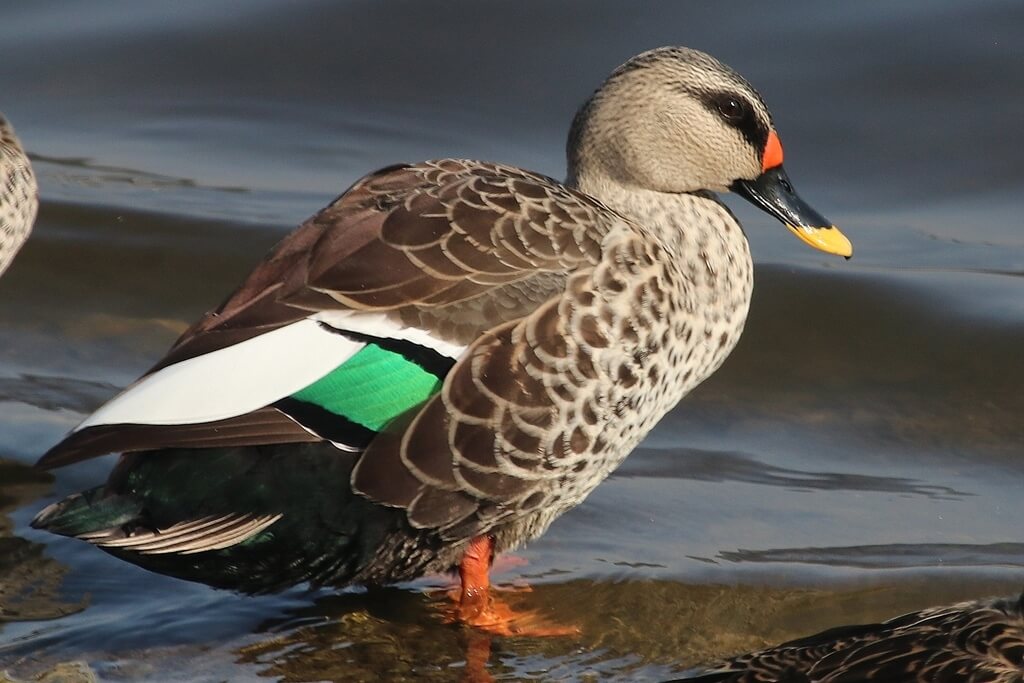
The Indian Spot-Billed Duck is common in wetlands across India and Southeast Asia. It has grey-brown feathers, a yellow-tipped black bill with red near the base, and orange-red feet. This duck likes calm lakes, ponds, and rice fields. It makes a loud quacking sound, similar to a female Mallard. Spot-Billed Ducks are strong flyers and migrate short distances. They are also good parents, often seen with many ducklings swimming behind them. Their population is stable, though pollution and habitat changes can affect them.
4. Torrent Duck
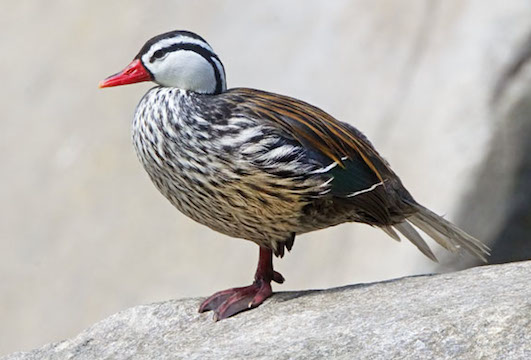
The Torrent Duck lives in fast-flowing rivers in the Andes mountains of South America. Males have striking black-and-white patterns, while females are rusty brown with grey heads. Their feet are reddish and strong, helping them grip slippery rocks in rushing water. They are expert swimmers and can dive against strong currents to find insects and small aquatic animals. These ducks mate for life and build nests in riverbank holes. They are not commonly seen because of their remote mountain habitats, but their population is mostly stable.
5. Common Merganser
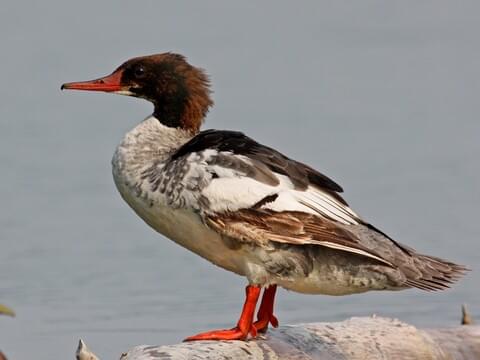
The Common Merganser has bright red feet and a long, thin red beak with tiny tooth-like edges for catching fish. Males have a dark green head and white body, while females have a grey body and a reddish-brown head with a shaggy crest. They live mostly on rivers and lakes with clear water. They are excellent swimmers and can dive deep to catch fish, frogs, and insects. They often nest in tree holes or nest boxes near water. Mothers are caring and lead their ducklings to water soon after they hatch.
6. Black-Bellied Whistling Duck
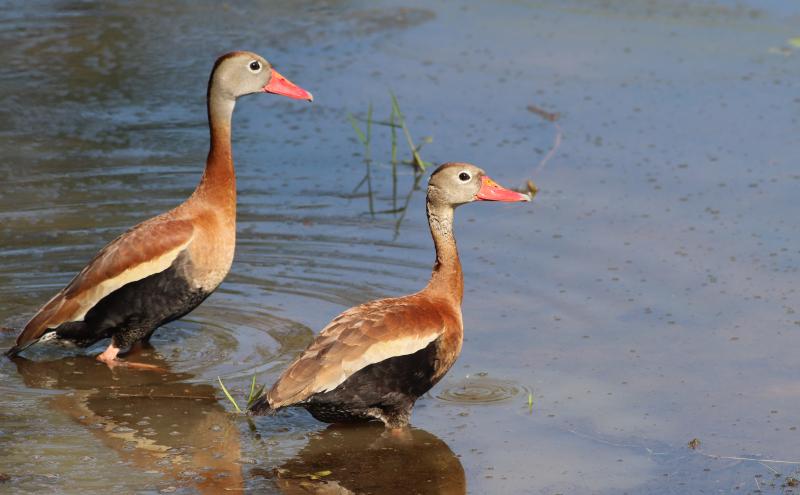
The Black-Bellied Whistling Duck is a colorful duck with bright red feet, a pink bill, and a black belly. It is found in the southern United States, Central America, and South America. It has a long neck and stands tall, looking almost like a goose. These ducks make a loud whistling sound instead of a normal quack. They like shallow lakes, rice fields, and wetlands with trees. They often perch on tree branches and nest in tree holes. They are social birds and often stay in groups. Their population is growing because they adapt well to farms and parks.
7. Brazilian Teal
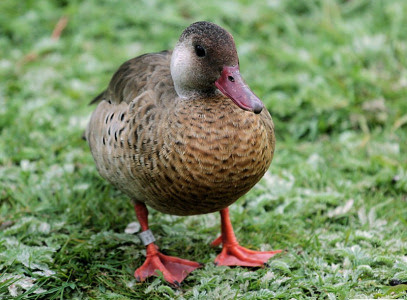
The Brazilian Teal, also called the Brazilian Duck, is a small duck found in South America. It has reddish-pink feet and a slender body. Both the male and female look alike, with soft brown feathers and a grey head. They like quiet ponds, marshes, and slow rivers. This duck is more active at dawn and dusk, feeding on seeds, insects, and small water creatures. They form strong pairs and often stay together year-round. They are calm and not very shy, which makes them popular in aviaries. Their numbers in the wild are stable.
8. Bufflehead
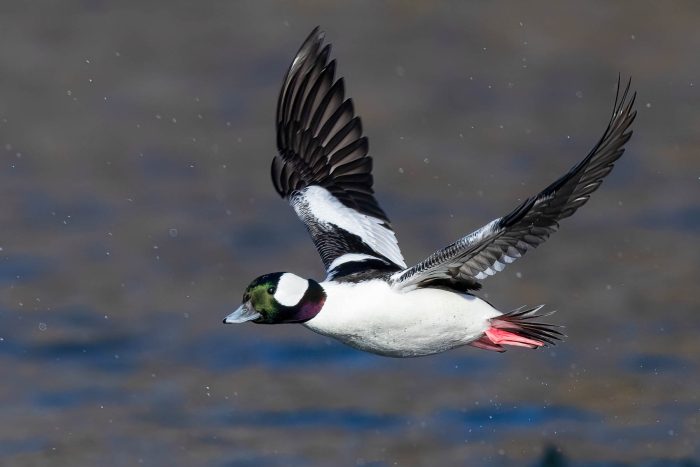
The Bufflehead is a small, active duck found mainly in North America. It has pinkish-red feet that stand out against its white belly. The male has a large white patch on the back of its head with shiny green and purple colors, while the female is mostly grey-brown with a small white patch on her cheek. Buffleheads are strong fliers and fast divers. They nest in tree holes, often using old woodpecker nests. They feed on insects, small shellfish, and plants in shallow water. Despite their small size, they are tough birds and can survive in cold climates.
9. Common Shelduck
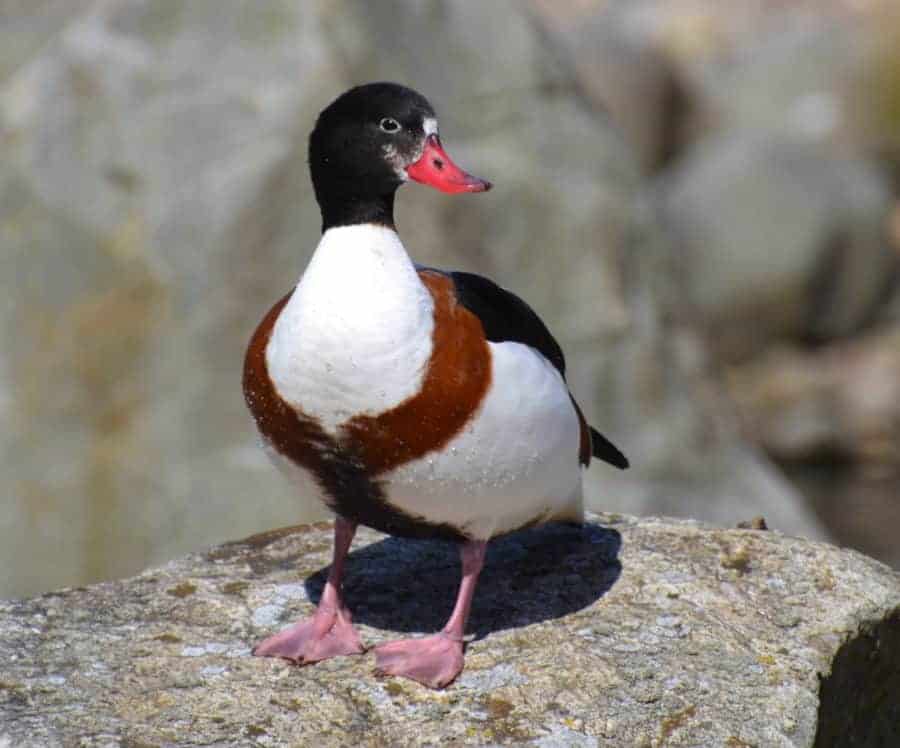
Bright orange-red feet make the Common Shelduck easy to spot, especially when it walks along mudflats or sandy shores. This duck has a striking white body with a dark green head and a chestnut band across its chest. It prefers coastal areas, salt marshes, and estuaries. Unlike many ducks, it often nests in burrows or rabbit holes. Shelducks feed on small snails, crustaceans, and aquatic plants. They are strong fliers and migrate in large groups. When raising young, both parents stay close to protect their ducklings from danger.
10. Mallard
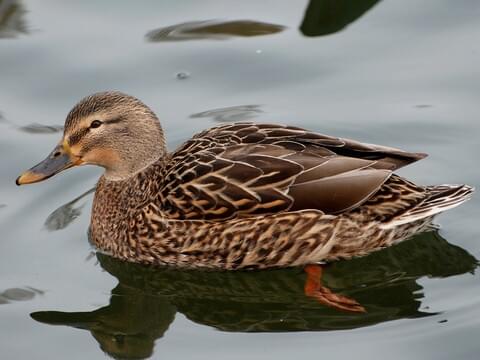
Most people know the Mallard—it’s one of the most common ducks in the world. It has bright orange feet that stand out clearly when it walks on land or takes off in flight. The male has a glossy green head and yellow bill, while the female is brown and speckled for better camouflage. Mallards live in ponds, lakes, rivers, and even city parks. They are dabbling ducks, meaning they tip forward in the water to feed on plants, seeds, and small insects. Mallards are also the ancestors of many domestic duck breeds.
11. Aylesbury Duck
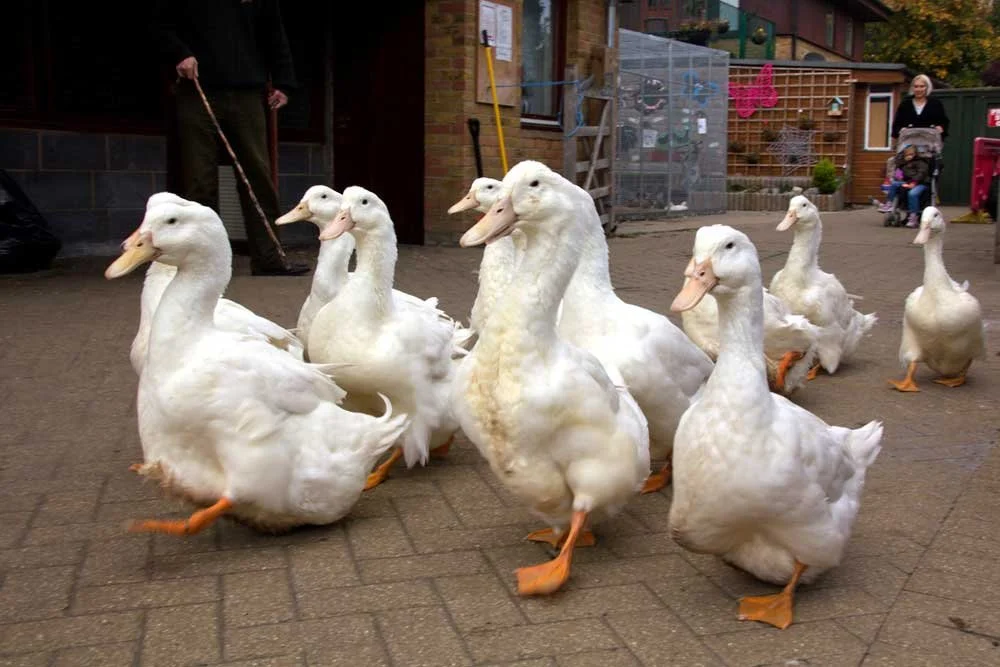
The Aylesbury Duck is a domestic breed known for its snowy white feathers and bright orange feet and bill. It was originally bred in England for its meat. These ducks have long bodies and a calm, friendly nature. They do not fly and prefer to stay near shallow ponds or grassy fields. Because of their white feathers, they are easy to spot from far away. They enjoy a peaceful environment and need clean water to stay healthy. Today, they are less common and sometimes kept by hobby farmers or in heritage breed farms.
12. Indian Runner Duck
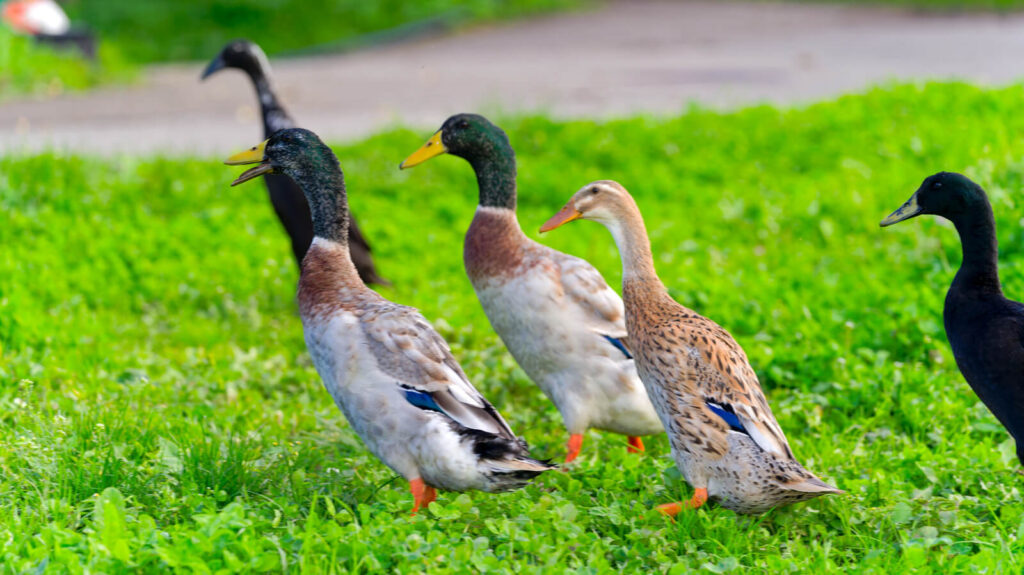
Standing tall like a bottle, the Indian Runner Duck is easy to recognize. Its feet are orange or reddish-orange and help it run rather than waddle like most ducks. These ducks can’t fly and prefer walking or running quickly across fields and yards. Indian Runners come in many colors, including white, fawn, and black. They are great egg layers and are often kept on farms for this reason. They enjoy rice paddies, ponds, and gardens where they eat insects, snails, and weeds. Their active and curious nature makes them fun to watch.
13. Magpie Duck
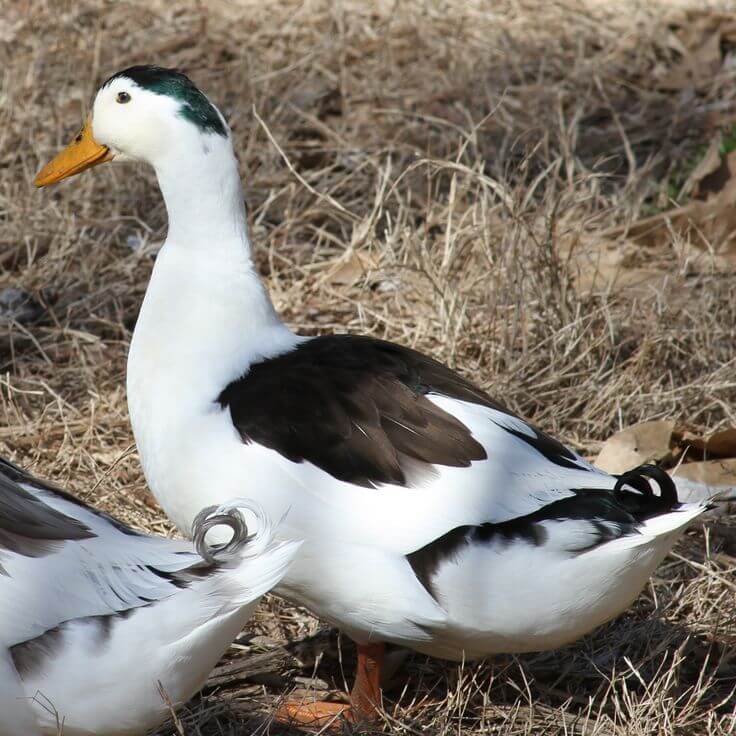
The Magpie Duck has orange feet that stand out under its black-and-white “magpie” patterned feathers. This breed was developed in Wales and is mostly kept on farms and in backyards. Magpie Ducks are excellent foragers that enjoy grassy areas, ponds, and gardens where they search for insects, plants, and seeds. They are calm, friendly, and good egg layers. Unlike wild ducks, they are not strong fliers. Their contrasting plumage makes them popular among duck enthusiasts and small farmers. They also enjoy human company and are easy to train with gentle care.
14. American Pekin
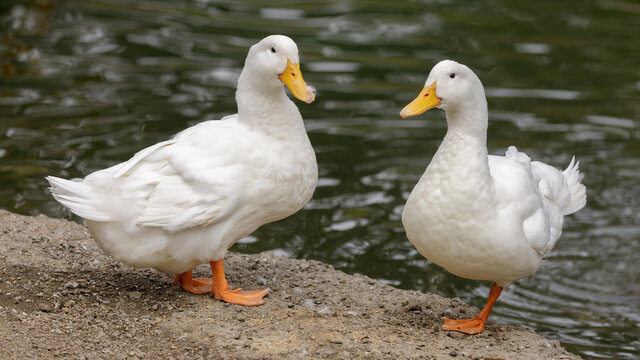
American Pekin ducks are one of the most familiar domestic duck breeds, easily recognized by their bright orange feet and bill. Their bodies are covered in pure white feathers, and they have a calm, gentle nature that makes them popular on farms and in backyards. Pekins are large, sturdy ducks that don’t fly and prefer waddling around grassy areas or relaxing near ponds. They are excellent meat ducks and also lay a fair number of large white eggs. Because of their friendly personality, many people also keep them as pets.
15. African Black Duck
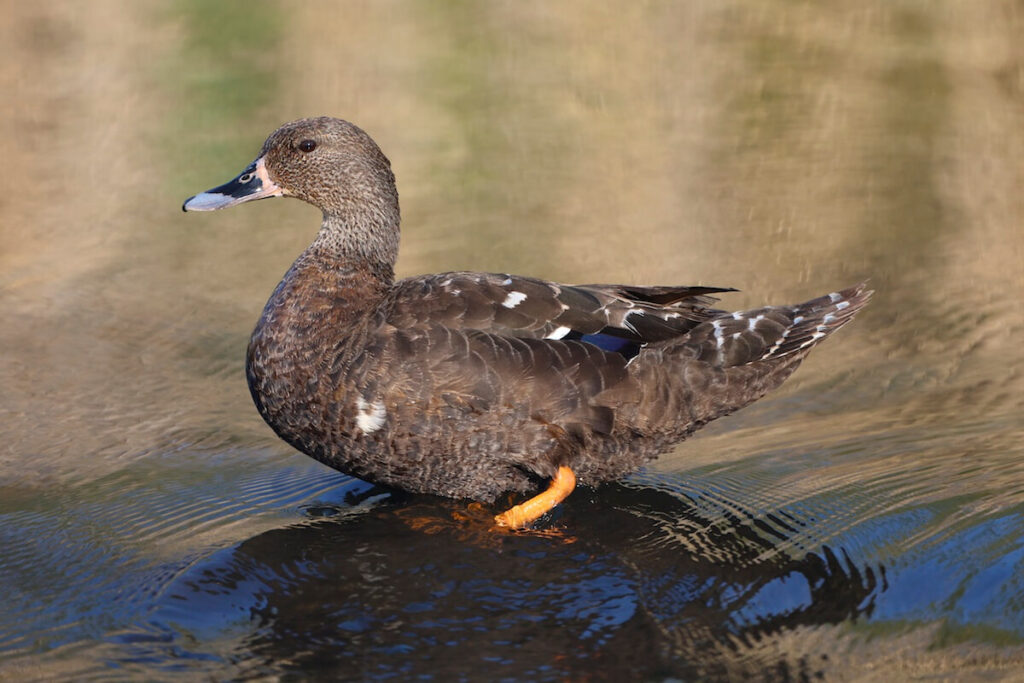
The African Black Duck has dark plumage with hints of blue or purple in the sunlight and bright orange feet that stand out against its dark body. This duck lives in fast-moving rivers and rocky streams across Africa, especially in places with clean, clear water. It is shy and often hides among rocks or plants, making it harder to spot than other ducks. African Black Ducks feed on insects, small fish, and aquatic plants. They are strong swimmers and rarely leave the water for long. Their orange feet help them grip slippery rocks in fast-flowing streams.
